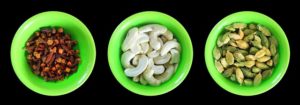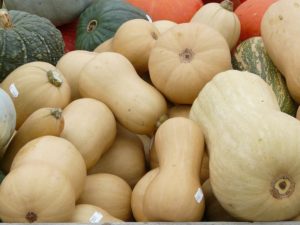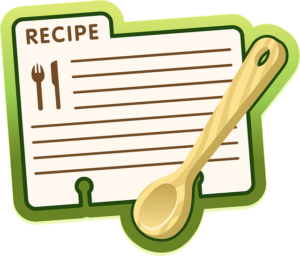Book Review
You have to have respect for a book that has received a nearly perfect customer satisfaction score from more than 100 buyers. The Amazon review system operates on a 1 to 5 star scoring system.
One star means that the reader was not very pleased with the book they and five stars is a perfectly positive rating. The Everyday Ayurveda Cookbook: A Seasonal Guide to Eating and Living Well, available in both paperback and Kindle digital versions, has achieved a sterling 4.8 star customer satisfaction rating.
Let’s dig in deep and see exactly what you can expect from this cookbook using Ayurvedic influences dating back thousands of years.
We are what we eat
Kate O’Donnell says that food has always been a friend. From making mud pies as a toddler to coming of age in the kitchens of India, O’Donnell says she never gave digestion as influential to health and well-being much of a thought. She just ate when she was hungry.
As she got older and became an adult, she began to notice the relationship between what she ate and how she felt, mentally and physically. Particularly sick in her stomach at one point in time, she turned to an Ayurvedic doctor, because he was the closest healer at hand.
He explained how Ayurvedic medicine uses food to heal, and to prevent illness and disease from occurring in the first place. He asked about her particular mental, physical and emotional state, and then recommended a local vegetable to heal her.
She went to see a vegetable vendor, who “pointed to a white squash the size of a ceiling fan.” She took it home, prepared it as instructed, and her digestive issues disappeared.
From that time forward, she has been an avid Ayurvedic practitioner, and is also a full-time yoga instructor, as yoga is a smart lifestyle practice recommended in Ayurveda.
The Idea
O’Donnell says that after living for 15 years of what she calls the best mental and physical health and wellness of her life, thanks to Ayurveda, she wanted to share the Ayurvedic ideas about nutrition with the world.
She teamed up with a photographer who is also Ayurvedic, because she wanted the photographs of the recipes and meals to show the true vitality and essence of the foods used to create them.
O’Donnell also yearned to make recipes that were easy to prepare, and fit in well with modern, busy lifestyles. She has included not only recipes, but shopping lists and seasonal food guides that help you create a strategy for ” … practicing Ayurvedic cooking and lifestyle routines right away.” The result is this 336 page recipe-packed, healing cookbook that was released in 2015, but whose recipes and life tips are timeless for improving your health.
As an Amazon Associate I may earn money from qualifying purchases.
Breakdown of Book’s Content
The book starts with a Readers Note from the author. She explains her history with food, and how she didn’t originally associate eating with health as a young adult. She was sometimes healthy and sometimes sick, and didn’t realize the food she was putting into her body was largely responsible.
A digestive health problem in India led her to an Ayurvedic healer, and after eating the prescribed Indian vegetable that looked like a “white squash the size of a ceiling fan”, the author healed almost instantly. This led her to pursue an education in all things Ayurveda.
In the Readers Note, the yoga teacher/author/Ayurvedic practitioner says, “The diet and lifestyle I introduce in this book have greatly supported me in sustaining a life of service in an urban environment and balancing a spiritual path with the duties of daily life.” She goes on to say that the recipes in this book, and lifestyle tips, can help you create similar balance in your life.
Book’s Introduction
This leads to an Introduction which tells you that the goal of this book is to get you in the kitchen, and out of restaurants, fast food chains and eating food that you don’t prepare. The author also makes it a point to tell you these are simple meals and they can be prepared quickly, with ingredients you should be able to lay your hands on at your local grocery store.
She says this book is for you if you are looking for reliable, proven ways to improve your lifestyle, and both mental and physical health profiles through diet.
The book is also helpful if you are new to cooking or Ayurveda, you experience poor digestion, or are frequently tired and anxious.
Included are recipes for simple breakfasts, lunches and suppers that can be adapted by switching out particular ingredients as the seasons change, and as your energy is influenced by different spices and food items.
Book’s 2 Main Parts
The meat of the book, which is broken down into 2 main parts. Part one, Understanding Ayurveda, contains 3 chapters. It is here where you learn the principles of Ayurvedic eating. You also get a quick history on what exactly Ayurvedic is, how it developed in India more than 6,000 years ago, and why it can lead to such incredible health and wellness even today. This first part of the book contains just 51 pages, but is recommended reading to help you understand how powerful Ayurvedic cooking can be for boosting the overall health and wellness of you and your family.
The second part of the book contains 5 chapters and covers a full 160 pages. Here is where you get into the kitchen and start cooking. You discover Foundational Dishes for Year-Round Cooking. As mentioned above, these are recipes that can be tweaked and adapted to seasonal spices and vegetables so you are always eating the freshest and most appropriate energy influencers for mind-body energy balance. You then receive recipes for Spring, Summer, Fall and Winter.
Book’s Appendices
The last 24 pages of the book are extremely helpful. Appendices are contained here, covering topics like Seasonal Cleansing, the tools and techniques you need for an Ayurvedic kitchen, Cooking Tables and Seasonal Shopping Lists. The book finishes with a Glossary and a list of helpful Resources, followed by the author’s Acknowledgments.
Mind-Body Connection
Ayurvedic medicine has been around for thousands and thousands of years. It is still used today, often by conventional doctors and medical professionals as a complement to modern medicine.
Based on keeping the mind-body connection in balance for overall health and wellness, Ayurvedic practices often times heal and cure an individual which modern medical practices have failed to help.
5 Main Elements
Ayurvedic medicine teaches that your environment, relationships, actions, the 5 major elements and lifestyle choices all play an important part in influencing your health and well-being.
The Everyday Ayurveda Cookbook: A Seasonal Guide to Eating and Living Well teaches that your specific energy profile and the time of year dictate what foods you should eat and should avoid. This is because the 5 main elements found in nature according to Ayurveda: Earth, Air, Fire, Water, Space, obviously influence seasonal temperatures, weather patterns and other environmental conditions that affect your energy type.
Those elements also have an impact on what food is harvested at what times of the year, so putting those two thoughts together means consuming certain foods will influence your health positively during summer months, and negatively during others.
As an Amazon Associate I may earn money from qualifying purchases.
The Everyday Ayurvedic Cookbook “uses fresh, seasonal ingredients to enable you to create, in the middle of a busy day, authentic, healing meals.”
If you believe in the power of food to prevent and heal illness and disease, both mental and physical, this natural food cookbook is for you.






